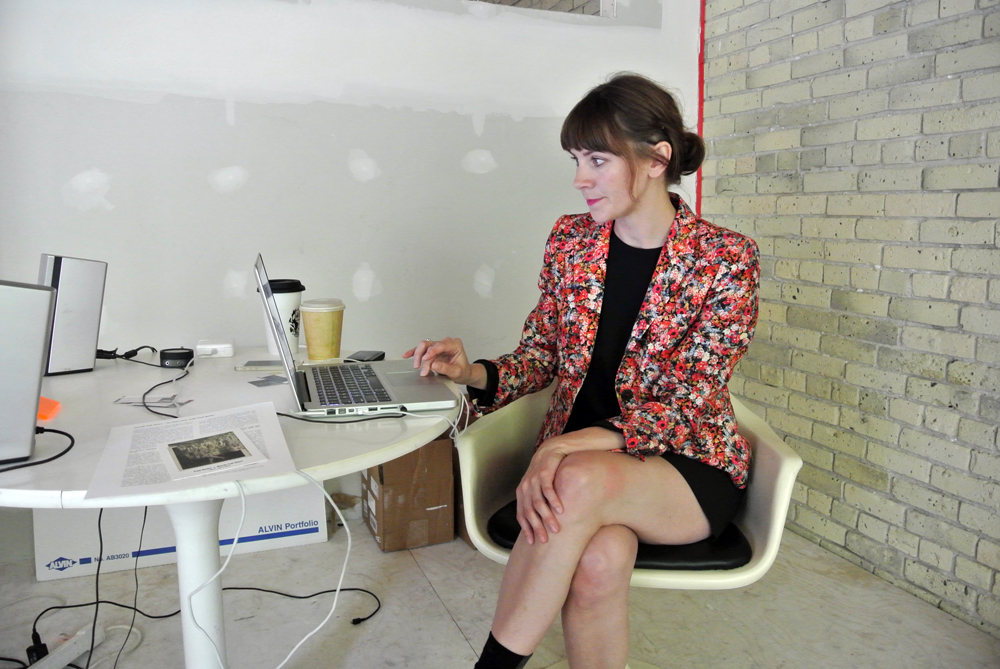This month I’m heading west across Canada on the Trans-Canada Highway, starting from Toronto. Although I’m tempted to call the series of dispatches I will be writing along the way a “regional survey,” the limited time I can spend in each community means that my coverage will be highly subjective—it would be unfair to consider this a comprehensive overview. Instead, these articles will offer a condensed journal of this journey, and an opportunity to recognize a few of the dedicated artists and organizers who advance the arts in these locations.
Winnipeg
Once I left the winding highways of Northern Ontario the drive to Winnipeg on the Prairies’ flat and straight roads began to feel especially long. I really didn’t want to stop and gas up one more time before I arrived in the city, so my tank was almost empty as I drove into the downtown. As I gave in and filled up I learned first hand that the myths I had heard about Winnipeg’s urban mosquitos weren’t exaggerated.
Winnipeg was new to me, and, while I knew of its relative isolation, I had heard its reputation as a centre with many art galleries, strong programming and a history of producing some of Canada’s most talented contemporary artists (Marcel Dzama, Daniel Barrow and Diana Thorneycroft, to name a few).
I met with Lisa Kehler at Lisa Kehler Art and Projects, her new commercial gallery space located in one of the heritage properties of Winnipeg’s Exchange District. The gallery’s first exhibition was on view, featuring collages and prints by the “very Winnipeg” Paul Butler, titled Words Fall Short. It’s reflective of the gallery’s planned programming: Kehler’s space represents 19 Winnipeg artists. Kehler said that, “People come here because they know of these artists, but, up until now, there was nowhere to buy the works.” So far, she told me, most of her clientele have been out-of-towners, and she has been sending works off to Calgary, Toronto and Halifax. Kehler is from Manitoba and, after moving to different cities in Canada for several years, she became a Winnipeg local again four years ago. She feels that an understanding of the valuation of artworks needs to be developed locally, noting that most people acquire their works through charitable auctions, which can be good for buyers, but less so for artists. She hopes to give Winnipeggers the collecting bug, and build a market for contemporary art within the city.
Later that day I visited the Plug In Institute of Contemporary Art, which is frequently mentioned in conversations about prominent Canadian art centres. It’s a large public institution with a 43-year history that began with humble roots as an artist-run centre, but grew into something larger. In the late nineties, Plug In ICA recognised that their mandate reflected that of broader public institution, with an increased emphasis on international profile, publishing, public programs and more. With help from the community and a strong partnership with the University of Winnipeg, they raised funds to construct their present purpose-built space. The space was between shows during my visit, but I received a warm welcome and tour of the facility by the recently appointed director of artistic programs, Jenifer Papararo, who said that the Plug In ICA’s “location was intended to enliven the area near the university and next to the Winnipeg Art Gallery as part of a larger plan to create a cultural corridor for the city.”
Before I left, Papararo gave me a poster edition that the gallery recently commissioned from Rodney Graham. The posters come in a series of five colours with bold white text that reads, “SEND YOUR CHILD TO ART SCHOOL,” and were placed around the downtown core in January. The posters are not exhibition posters; they have no dates or names on them. Instead, they challenged sentiments toward artists and the role of educational systems. When I asked if it was ever a challenge to bring the public into Plug In ICA, Papararo said, “It’s no more difficult to get the public interested in the arts in Winnipeg than any other place. It may be a bit easier, because it already has a very dedicated cultural audience.”
On my final day in the city, I was told that young artist Alexis Kinloch had made a non-profit library for artists’ books called Also As Well Too. I attended the opening reception at Kinloch’s apartment with artist Ray Fenwick; Kinloch 0had a friend waiting by the outside door to let guests inside. In her apartment she had set up a small bar in the kitchen and turned her living room into the library—there was no sofa and no TV, just shelves of artists’ books and some reading chairs. Kinloch collected books via a call for donations, so almost all of the books were either donated or on-loan from locals, but a few were also sent in from other provinces. Outside of events, the library has a few open hours every week, and is also accessible by appointment. This opening was the first official event for Also As Well Too that Kinloch has hosted, and she noted that future events would not always be in her home. That said, Also As Well Too also hosted an at-home artist residency during the first week of July featuring Toronto-based artist Erika DeFreitas. This is a great example of artists creating their own opportunities—it’s no wonder that Winnipeg’s artists are at the forefront of Canadian culture.









